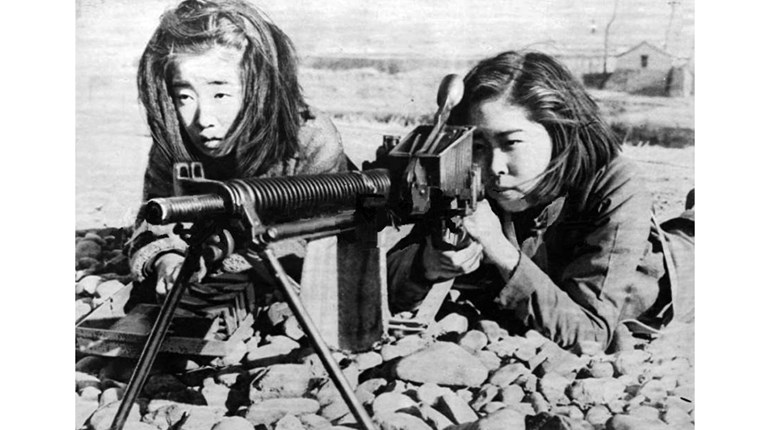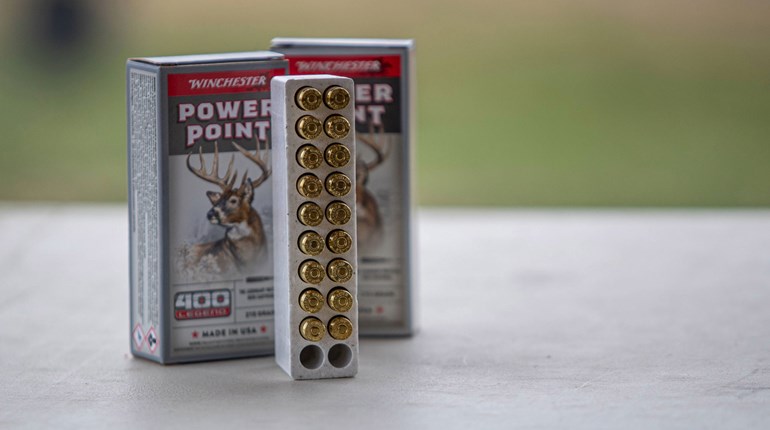
For all the exhaustive evaluation the U.S. Ordnance Department went through before adopting some of its weapons—including testing and retesting the M1 Garand, plus countless field trials that culminated in firing 6,000 rounds practically nonstop through the Colt M1911 before its adoption—it's a real head-scratcher why the Reising submachine gun was drafted into World War II without so much as a complete physical. But then, we were at war and needed weapons. Besides, its pedigree would seem to include all the credentials the Reising needed.

This lightweight, compact submachine gun—capable of both semi-automatic and full-automatic fire—was designed by Eugene D. Reising, a noted competitive shooter and one-time associate of John M. Browning. An ordnance engineer by trade, Reising was the recipient of more than 60 firearm patents and worked with Browning on the development of the M1911. No doubt this was the inspiration for Reising to chamber his new submachine gun in .45 ACP. Moreover, it was manufactured by Harrington & Richardson, a well-respected American firearms company in business, in one form or another, since 1871.
Reising's basic rifle—the M50—was patented in 1940, and H&R began manufacturing it in 1941. It fired from a closed bolt, sported a Parkerized finish, had an 11-inch finned barrel outfitted with a Cutts compensator, a one-piece wooden pistol grip stock and utilized a detachable 12- or 20-round magazine.
The stamped-steel rear peep sight was calibrated for 50 to 300 yards and centered on a thick steel-post front sight. On full automatic, rate of fire was a healthy 500 to 550 rounds per minute. There was also a selective-fire Reising M55 with a somewhat flimsy folding wire stock. It had a finned barrel, but lacked the compensator, which reduced barrel length to 10.5 inches, in keeping with its intended purpose of being issued to paratroopers and armored-vehicle crews.
Another variant, the Reising M60, was semi-automatic only and had an 18.5-inch barrel. These were intended primarily for civilian, law enforcement, Coast Guard and merchant marine use. A few M60s were also chambered in .30 carbine. Finally, there was a .22 LR semi-automatic M65 meant for training purposes, although how many were actually used in this capacity is open to debate. Some servicemen referred to these rimfire variations as "rat rifles," which may offer a clue as to their more practical purpose of vermin extermination around the camp mess area.

But for all its apparent attributes, the Reising failed to live up to expectations in combat. In-the-field assembly and disassembly tests revealed the Reising was not soldier friendly, which was complicated by a lack of easily interchangeable parts (the Reising was largely a hand-fitted weapon) that proved to be a logistics nightmare for armorers. Moreover, its delayed-blowback operation utilized a receiver design prone to jamming due to frequent internal accumulations of fouling and debris. In addition, the double-stack 20-round magazine—made of thin sheet metal—was easily damaged around the feeding lips, forcing G.I.s to resort to the 12-round single-column alternative, which emptied quickly in full-automatic mode.
Though it balanced well, a notable design flaw of the Reising was its cocking lever, which was inlaid into the underside of the stock, making it extremely awkward to charge the gun. This was usually done by turning it sideways or upside down to reach the cocking lever cutout, then inserting the index finger or thumb against the charging bolt and pushing it against a stout spring. Finally, an 8-pound trigger pull and an easily corroded firing pin—a definite detriment in the humid jungle fighting of the South Pacific—added to the Reising's maladies.
In the gun's defense, it should be pointed out the Reising submachine gun was never intended as a battlefield weapon. Its original mission was for the civilian law enforcement community, and in this capacity it served fairly well. Thus, it shared a trait with the Thompson submachine gun, which also used the same cartridge as the M1911. Its .45 ACP chambering may very well have opened the door to the Army's acceptance of the Reising, in spite of all its shortcomings.
In fact, it was the Thompson submachine gun and the M1 carbine that indirectly paved the way for the Reising's entrance into the war. The government had been looking for a submachine gun to replace the Thompson, which was heavy at 13 pounds and expensive at $225 apiece. By comparison, Reisings cost only $50 each and weighed 6.5 pounds. In addition, as we entered World War II, there was a shortage of both Thompsons and the new M1 carbines. So, it was decided to issue the Reising M50 and M55 to the Marines, specifically those units bound for the Pacific Theater, where humidity—and its resultant rust—were rampant. Combined with the Reising's propensity to jam and for the M55s stock to suddenly fold during full-automatic recoil, the Reising quickly earned the wrath of more than just "a few good men."

A battlefield weapon has to be pretty bad to have a commanding officer order them dumped overboard. But that's exactly what then-Lt. Col. Merritt "Red Mike" Edson, future Medal of Honor recipient and President of the National Rifle Association, did with his troop's Reisings, in the hopes they would be replaced with M1 carbines. Needless to say, by 1943 the Marines cancelled all remaining orders for Reising submachine guns. A few were then redirected to the OSS, Canada and other allies. In all, approximately 120,000 Reisings were manufactured between 1940 and 1945.
After the war, a number of semi-automatic Reising M60s were sold to law enforcement agencies, where many served through the 1970s. H&R made another short run of the M50 for law enforcement use in the 1950s. For all its downsides, the Reising was an accurate rifle, with a high cyclic rate of fire. Those who watched the recent HBO mini-series, "The Pacific," saw one being used in the second episode. But you don't see them in movies very often, and there's a reason. Call it typecasting, but during its first theatrical appearance in the 1944 war-time movie "Marine Raiders," the Reising jammed.






































